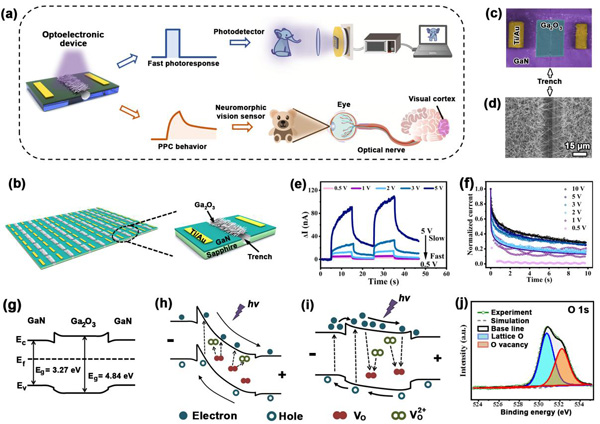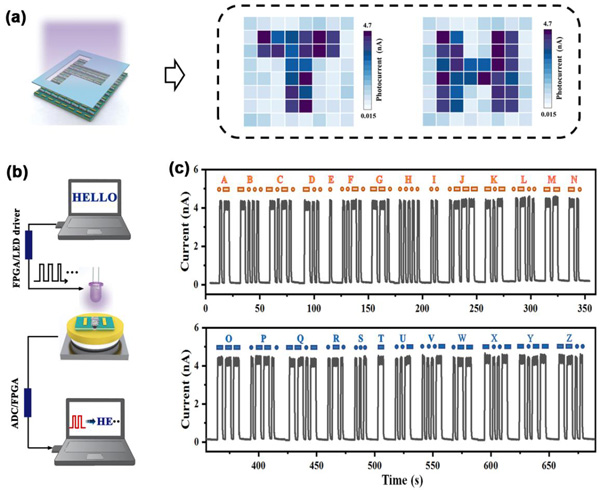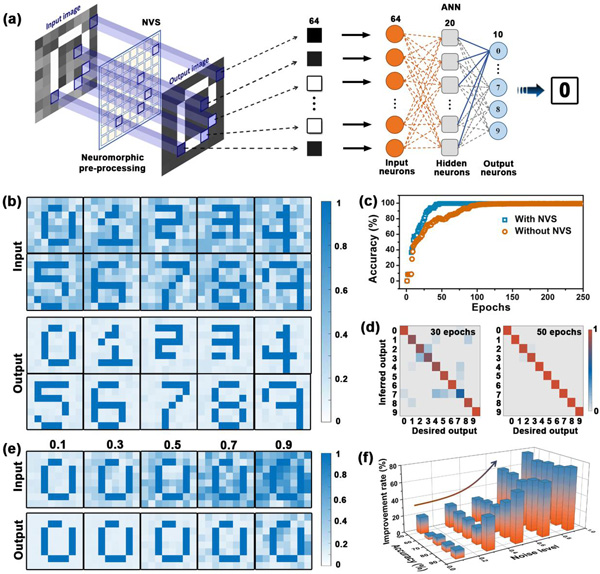Photodetectors and neuromorphic vision sensors are two typical optoelectronic devices that play important roles in sensing and processing optical information. Photodetectors have fast light response and high sensitivity, making them suitable for optical sensing, communication, and imaging systems. On the other hand, neuromorphic vision sensors, inspired by the human visual system, can perceive, merorize, and process light signals. These two optoelectronic devices have distinct characteristics and complementary functions. Therefore, integrating photodetectors and neuromorphic vision sensors into a single device that can be switched according to application scenarios would undoubtedly enhance the integration level and broaden the application domains of optoelectronic devices. However, it is challenging to achieve the simultaneous functional integration of the two devices on one device due to their conflicting requirements for photo response speed.
To address the aforementioned issue, Associate Prof. ZHANG Xinglai and Master student FENG Siyu from the Institute of Metal Research, Chinese Academy of Sciences (IMR, CAS), have developed a trench-bridged GaN/Ga2O3/GaN heterojunction array device. By manipulating the ionization and de-ionization processes of oxygen vacancies in Ga2O3, the device exhibits volatile and non-volatile photocurrents at low and high voltages, respectively. In other words, the roles of photodetector and neuromorphic vision sensor can be switched on a single device simply by adjusting the operating voltage.
When operating as a photodetector at low voltage, the device demonstrates a fast photoresponse speed (118 μs) and a high responsivity (1.13 × 1011 Jones), enabling complex functionalities such as optically controlled logic circuits, photonic imaging, and optical communication. As a neuromorphic vision sensor at high voltage, the device is able to simulate neuron/synaptic functions, including paired pulse facilitation, transition from short-term to long-term plasticity, learning-experience behavior, and image memory. Furthermore, by using the device for image pre-processing, the recognition accuracy and efficiency of the images are significantly improved. This research provides a novel approach to achieve advanced functions for both photodetectors and neuromorphic vision sensors on a single device. Additionally, it presents prospects for developing robot vision systems and neuromorphic computing.
Figure 1. Device design concept, and its structure and characterization.(Image by IMR)
Figure 2. Functional applications of the device as a photodetector in the field of optical imaging and optical communication.(Image by IMR)
Figure 3. Artificial neuromorphic vision system and image recognition using the neuromorphic vision sensor.(Image by IMR)


